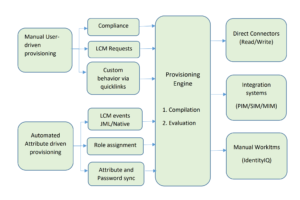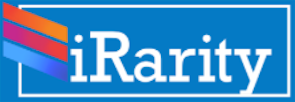In today’s world every system can prone to cyber-attacks. The main way to protect them is controlling and granting access based on user’s job functions. The effective way to controlling access is provisioning. By automate the process of provisioning may prevent from risk of manual errors. The primary objective of provisioning is to prevent unauthorized access of sensitive information.
What is Provisioning?
Provisioning is the key component of IdentityIQ. It refers to the process of automating the process of creating, updating and removing user account (or) system access entitlements and roles. Provisioning is performed through workflows and automated processes. IdentityIQ provides all-inclusive provisioning solutions and features such as onboarding users, policy driven provisioning, and role based access control. The main goal of provisioning is to ensure that everyone are having the appropriate access for their job functions and also prevent unauthorized access. Provisioning is used to synchronize user data across multiple systems and keep it up to date.
Types of provisioning:
- Manual Driven provisioning
- Automatic Driven Provisioning

Manual Driven provisioning:
It refers to the process of creating, modifying and managing user accounts and permissions manually without using automate processes. Manual provisioning is used when organizations choose to implement manual process for security or compliance reasons. This process generally involves a manual review of requests, creation and modification of user accounts in target systems or applications, and assignment of permissions based on the user’s roles and responsibilities. Submittal of access request initiates the workflow to complete the process.

Automatic Driven provisioning:
In Sailpoint IIQ, Automated provisioning refers to the process of automatically creating, modifying and managing user accounts and permissions based on the predefined rules and workflows in target system or applications. The process can be triggered by life cycle events (J/L/M) such as the approval of a new hire, department change, and termination of employee. To communicate with the target systems and applications Sailpoint uses Connectors and it can automate the process of provisioning and deprovisioning user account and entitlements. Automated provisioning helps to reduce the risk of manual errors.

Role of workflows in provisioning:
Workflow plays a crucial role in provisioning by providing a structured and automated process of creating, updating and managing user accounts and accesses in Sailpoint IIQ. Workflows can also be used to enforce conditions and perform validations, such as checking that a user’s role and permissions are consistent with their job functions, or ensuring that all mandatory approvals have been obtained before provisioning is performed. In Sailpoint IIQ, workflows can be customized to meet the specific needs of an organization, and can be designed to integrate with existing workflows. It helps organizations to improve the efficiency of their provisioning process and reduce the risk of errors.
Importance of provisioning:
- Provisioning is an important aspects of identity and access management. It helps organizations to manage user access to their IT systems and applications.
- Provisioning helps organizations to ensure that user access to IT systems and applications is compliant with regulatory requirements and internal security policies.
- One of the most important benefit of provisioning in Sailpoint IIQ is improved security. Provisioning helps to reduce the risk of human error by automating the granting and revoking access process to IT systems and applications.
- Provisioning helps organizations to prevent unauthorized access to confidential information by controlling who has access to what resources and when. This is because access is based on predefined policies and is only granted after the appropriate approvals have been obtained.
- Another key benefit of provisioning is improved efficiency. Sailpoint IIQ reduces the time and efforts required to grant and/ or revoke access by automating the provisioning processes.
- Request can be processed rapidly and accurately, without the need of human intervention.
- Manual provisioning also provides a level of flexibility and control over the provisioning process. Manual provisioning enables administrators to handle exceptions and resolve problems in real-time, improving the accuracy and efficiency of the provisioning process.
